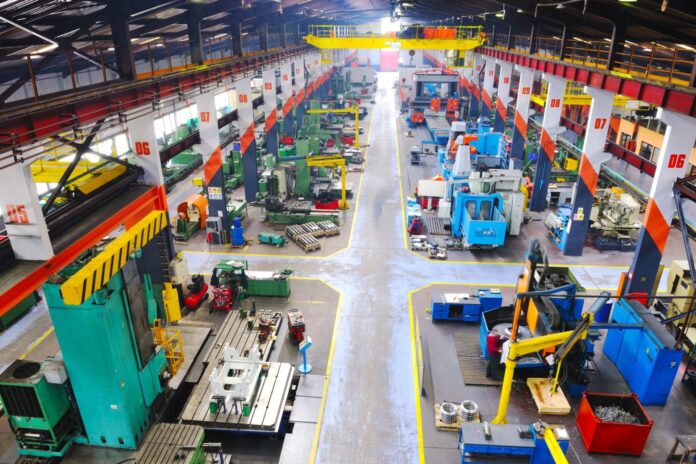5G technology is considered to be one of the main pillars for future industrial IoT manufacturing implementations
Industry 4.0 will certainly pave the way for more flexible, efficient and sustainable production lines in manufacturing facilities. In this scenario, 5G plays a key role as it is one of the main enablers of industrial IoT manufacturing implementations. This technology enables manufacturing firms and their supply chain partners the opportunity to use and implement emerging technologies such as artificial intelligence and machine vision, among others, with the aim of improving certain manufacturing processes.
The Fourth Industrial Revolution (4IR) will usher in smart factories. In these futuristic factories, connected devices will be able sense their environments and interoperate with each other, making decentralized decisions. Many expect this transformation will chiefly rely on the capabilities of next-generation 5G networks.
5G networks offer manufacturers the possibility to build smart factories and truly take advantage of technologies such as automation, artificial intelligence, augmented reality for troubleshooting, and the Internet of Things (IoT). The low latency, high reliability, and increased speed of 5G networks are essential to support emerging technologies and their novel applications in this field, such as process automation, remote monitoring, and collaborative robots, among others.
5G will also allow for higher flexibility, lower cost, and shorter lead times for factory floor production reconfiguration, layout changes, and alterations, which will result in significant improvements in terms of production.
5G to provide the necessary backbone for industrial IoT implementations
According to technology research firm ARC Advisory Group, 5G will play a key role to enable the full potential of industrial IoT in the manufacturing field. “The potential is huge, and Industrial IoT already enables whole new business models. But before the full potential of the Industrial IoT can be realized, a modern, open communications infrastructure must replace some of the outdated, proprietary solutions commonly in use in industrial applications. Industrial 5G appears poised to provide that infrastructure,” the firm said
“A core requirement of Industrial IoT is the ability to connect sensors, devices, equipment, software applications, manufacturing production processes, workers, and end-consumers. Connectivity implies seamless vertical and horizontal integration across all layers of the automation pyramid, providing opportunities to increase operational efficiency from the plant floor to the supply chain by optimizing data, information, and analytics. The key elements that can boost Industrial IoT are improved connectivity, availability, low latency, flexibility, and speed. Industrial 5G will play a key role in helping industrial users achieve the goals of Industrial IoT,” ARC Advisory Group added.
According to a paper by Indian tech firm Wipro, industrial networks will need a stable, secure and fast connection to capture and process data in real-time for plant and equipment monitoring and maintenance. The firm noted that 5G is expected to provide last-mile connectivity by providing the speed, reliability, capacity and mobility that manufacturers require for successful IoT implementation.
Benefits of adopting 5G for industrial IoT implementations
Ashish Khare, General Manager, Cloud & Infrastructure Services at Wipro highlighted that some benefits of leveraging 5G for Industrial IoT include:
-Preventive maintenance: Operational intelligence critical to Smart Manufacturing will be enhanced by IoT capabilities by connecting sensors on 5G to gain real time information about equipment performance. When combined with Machine Learning (ML) and AI, the data can help predict and prevent malfunction of critical equipment.
-Enhanced process efficiencies and troubleshooting: Robotic systems can visually inspect products connected over 5G network for quality control purposes in real time through advanced visual recognition and deep learning neural networks, with a high degree of accuracy.
-Phased connectivity with network slicing technology: 5G can be programmed to support network slicing – allowing multiple virtual machine networks to be created on top of shared physical infrastructure. So, while the existing wired network can run as-is in manufacturing plants, wired networks can be moved to wireless technology in phases, as and when there is a technology refresh.
For more 5G manufacturing content, check out the following:
- What is 5G manufacturing and what does it mean for productivity?
- Top 5 5G manufacturing use cases
- Three 5G manufacturing case studies: Audi, Haier, Bosch
- What’s the role of a digital twin in smart manufacturing?
- 5G manufacturing use case spotlight: Automated guided vehicles
- 5G manufacturing use case spotlight: Real-time video analytic
- How to improve Overall Equipment Effectiveness with 5G
- 5G manufacturing use case spotlight: Additive manufacturing
- What is lean manufacturing and how can 5G help?
- Top 5 5G manufacturing use cases
- What’s the role of AI in 5G manufacturing?
- What is a digital thread and what does it mean for manufacturers?
- What’s the role of edge computing in 5G manufacturing?
- 5G manufacturing use case spotlight: Industrial automation
- 5G manufacturing use case spotlight: Troubleshooting using a digital twin

